Mating
Females are generally not mated before they are 15 months old or have reached 60 per cent of the weight of their mother.
An alpaca’s gestation period is around 11 and a 1/2 months, though can take significantly longer. Timing matings for births in the warmer season the following year can provide a more hospitable environment for your newborns. As it is important to keep an eye on expectant mothers, it will also be easier for you, if the majority of your animals are giving birth around the same time.
Alpacas are normally re-mated 2 weeks after giving birth, assuming no health issues, with the highest proportion of successful matings occurring at this time. Maiden alpacas can take a bit more time to get pregnant and there are some simple tests or procedures that can be done by your vet if mating proves unsuccessful. Obesity can cause, among other health issues, problems with a female’s fertility.
Alpacas are “induced ovulators”, which means that they are stimulated to ovulate and release an egg through the act of mating. The male “orgles” or sings to the female during the act of matin, which also encourages ovulation. A female ready to accept a male will cush or lie down and allow the male to mount her.
Most farms mate via pen matings. This is where the female is taken to a penned-off area and the desired male brought to her. A less common method of mating is paddock mating – where the male runs loose in the paddock with the females. This method is only successful when you have a large number of females to be mated to the same male or less time to spend. There are pros and cons to both methods, though pen mating is considered the safest and most reliable method.
The response of a female to a male’s approach will vary. Generally, a female that is “open” (ie not pregnant), will cush, while those who ovulated recently or are already pregant will spit. There are exceptions to this behaviour, so it is important to know your animals, as some may lie down straight away, while others will initially dodge the male even when they are open.
Confirmation of Pregnancy
7 days after mating you can test the female by bringing the male in for a “spit off”. Spitting, running and kicking are indicators of a successful spit-off, suggesting that the female ovulated when you mated her the week before. At this stage a female is not considered pregnant.
14 days after mating perform a second spit-off, if this is also successful and the female rejects the male, that is usually a good indication that the female is pregnant.
You can repeat the test at 21 days and 28 days after mating to ensure that the pregnancy has taken properly. It is not uncommon to lose the pregnancy within this period, as it takes three to four weeks for the developing embryo to attach itself to the uterine wall and begin to develop its placenta. Alpaca can also lose the foetus at a later stage, though by then it is generally too late in the season to remate them.
From 30 days there are also a few different ultrasound options to test for pregnancy, which should be pretty accurate assuming that the person doing it is experienced and the pregnancy is at the right stage.
Cria care
I would strongly recommend going on at least one alpaca birthing course before having cria yourself.
Alpaca generally make very good mums and birthing is relatively easy, but if there are issues you need to know how to spot them and then what to do about it. Obviously calling the vet is the best way to go, but sometimes if there is a delay in them arriving and if they are an on-call vet they may not be very familiar with alpaca and your knowledge could be very helpful. There are specialist alpaca vets that are happy to give on the spot advice by phone to vets less familiar with alpaca, so have the number and arrangement to hand in case this is needed.
We check the females who are nearing their birthing time at least every 2 hours in the morning, normally more and then at least every 3 hours in the afternoon when they are less likely to give birth.
Some of the signs that your alpacas are getting close to giving are:
- Bagging up of teats – a very reliable indication, even though this can happen up to 2 weeks before
- Frequent visits to the poo pile, with little result.
- Sitting less comfortably and a protuberance of the genital area when they sit.
- Moving off alone away from the rest of the herd.
Once the female starts labour properly, the cria is generally born with the hour, assuming there are no complications. It is important that you know the normal birthing process and how long each stage takes, as issues such as uterine torsion or breech presentations need to be dealt with quickly.
Once born, it is very important to give the mum and baby every opportunity to bond as it is critical that the cria nurse and get the vital colostrum within an hour or two of birth.
Without disturbing the developing bond, it is good to briefly hold the cria, check it over and disinfect the umbilical, then dry the cria off. Weighing them at this point is essential for monitoring their growth (or catching problems early).
Once you are sure the bond between mother and cria has developed and the baby is nursing successfully, there is not that much more you need to do for a bit, except enjoy the wonder of your newborn!
Over the first few weeks it is good to weigh the cria daily and then weekly, to ensure they are feeding and growing. We also monitor the mum’s teats to ensure that there are no swellings or other problems. It can be good to provide the mums with extra feed while they are lactating (depending on their overall health and weight), so in the course of a normal day you’ll have the chance to monitor them get the cria familiar with having you around.
Cria should be weaned at around six months of age at which point halter training can be done properly. Before this point we would ensure that the cria is comfortable around us and trusts us to gently handle it all over and to accept a halter for very short lengths of time.
Fancy That Appaloosa Skydance - Alpaca Orgling Mating Sound

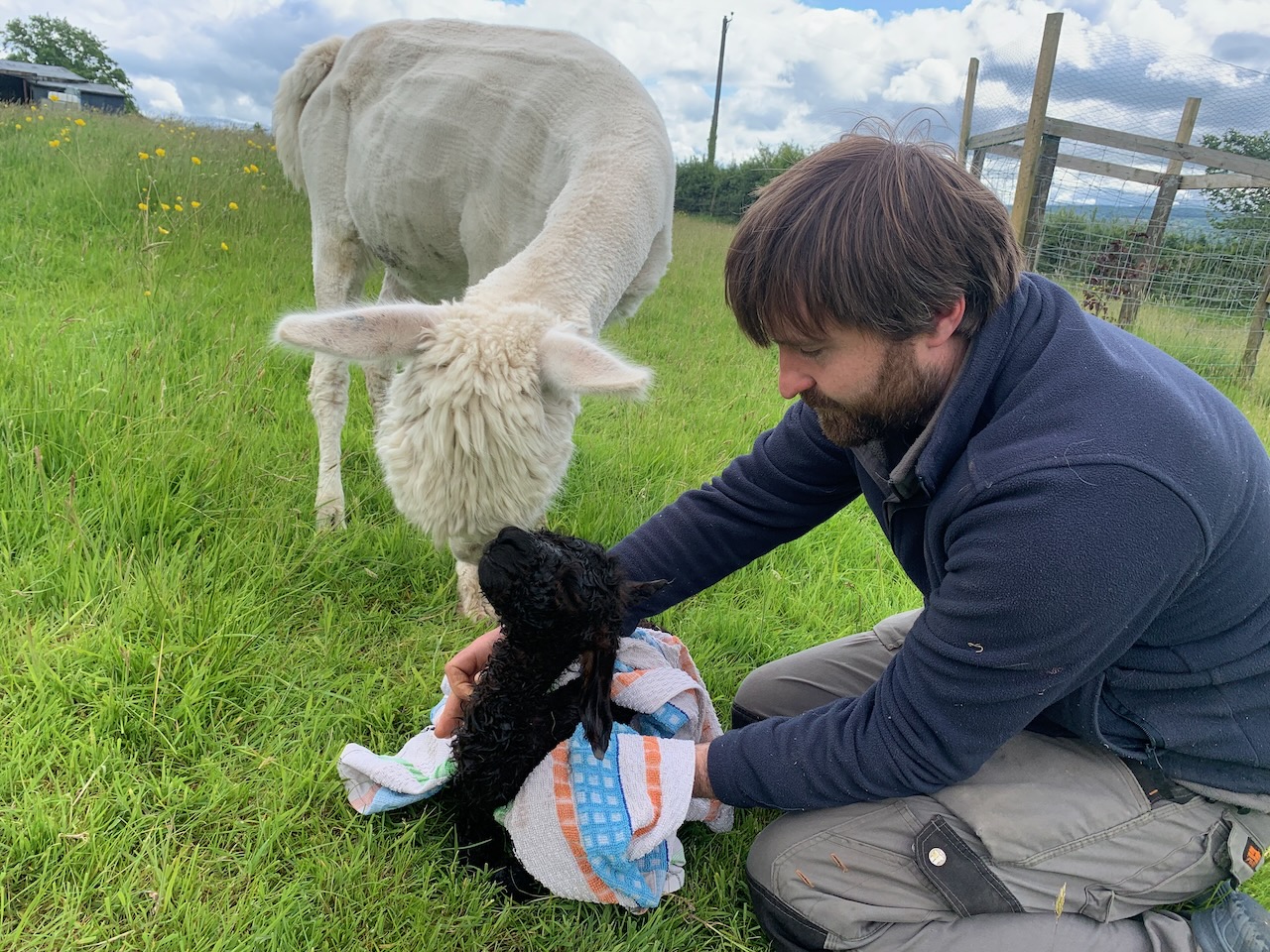
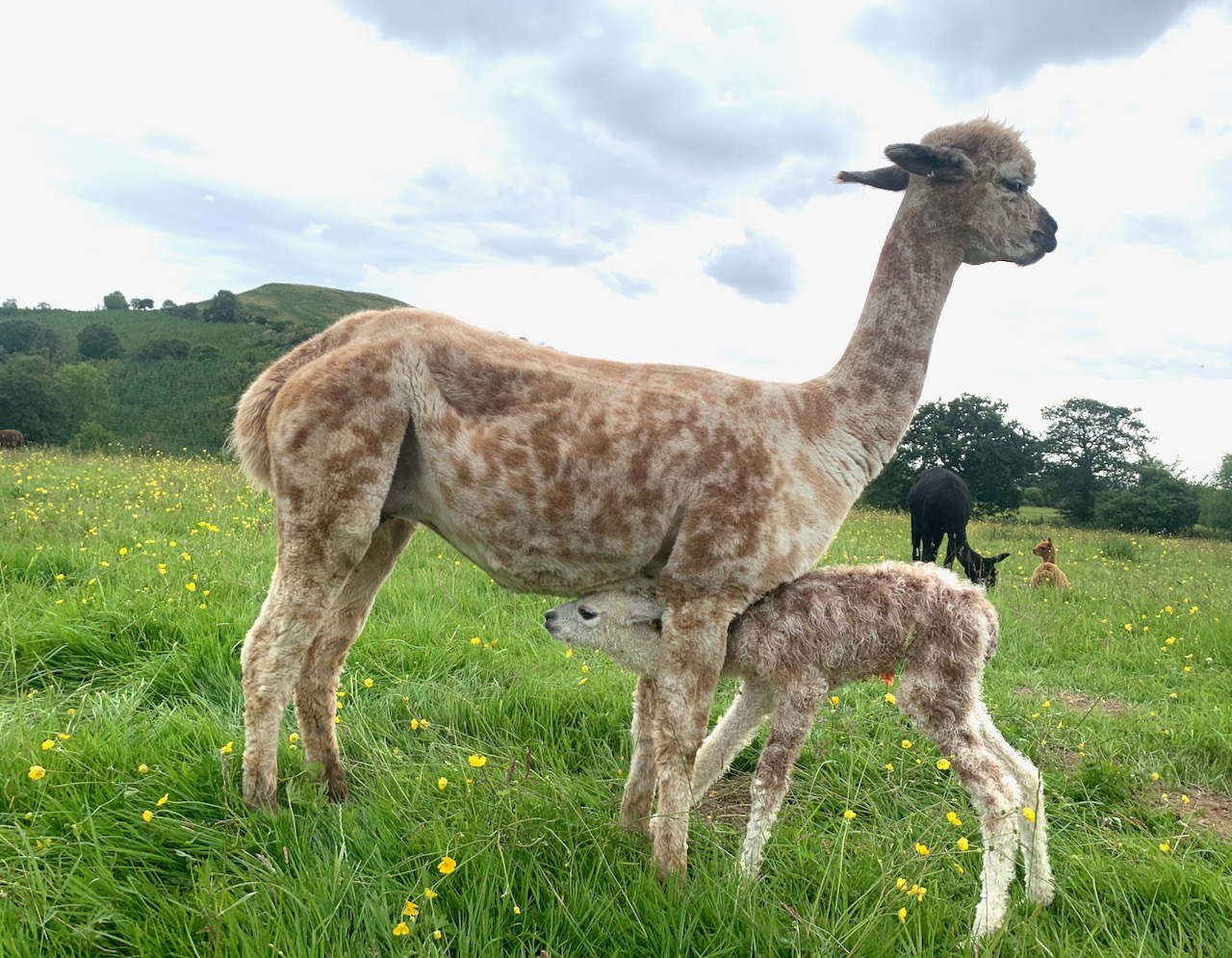
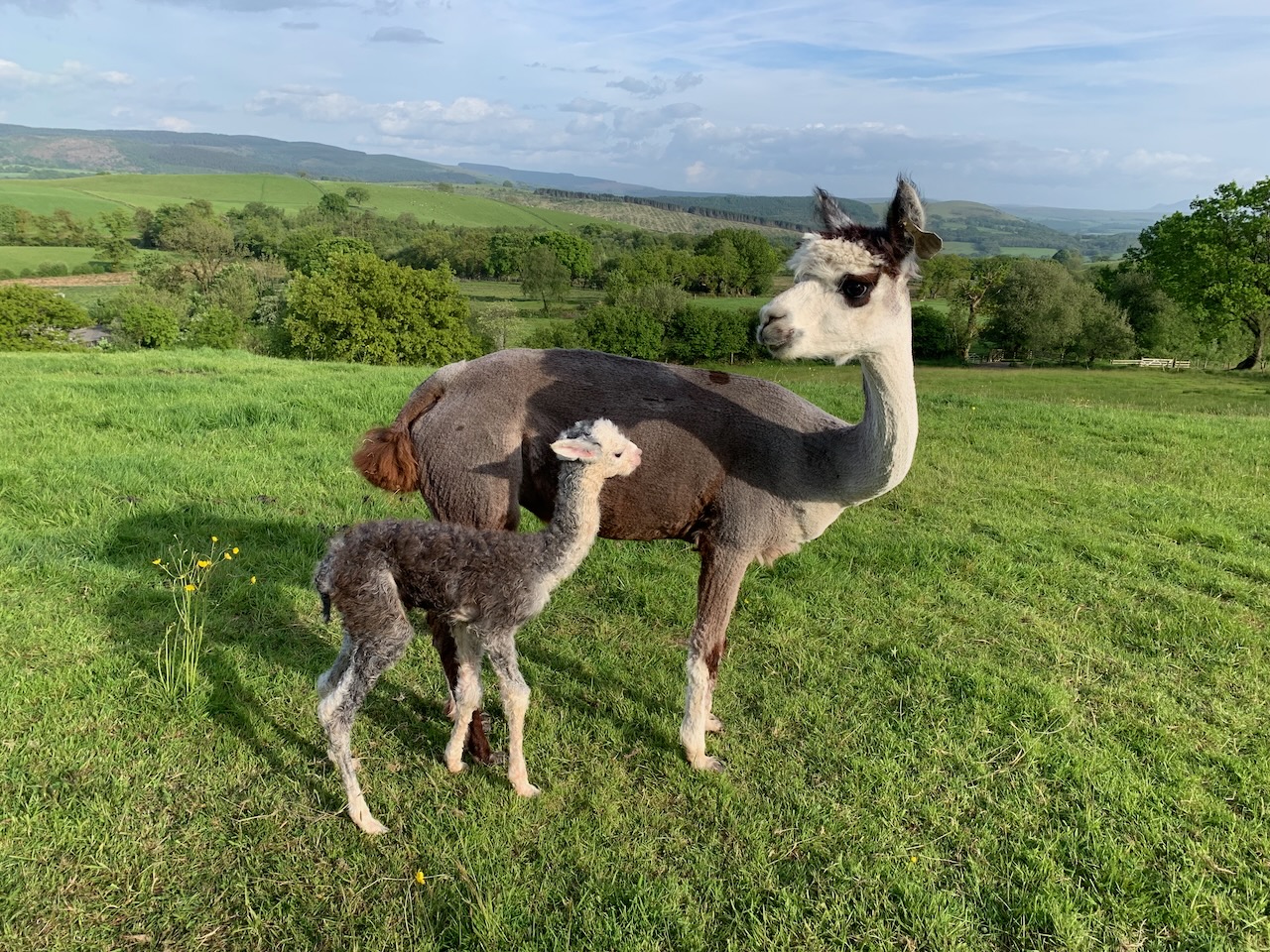
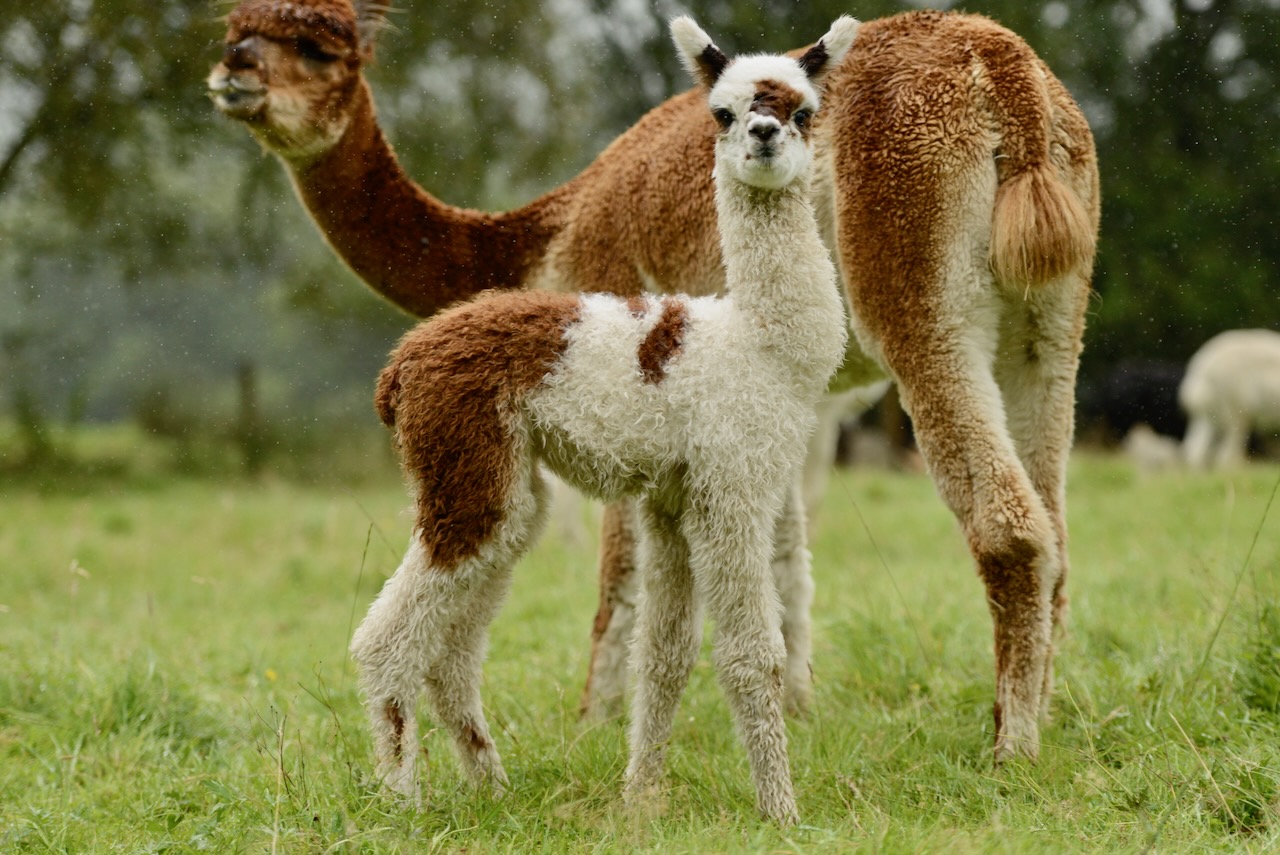

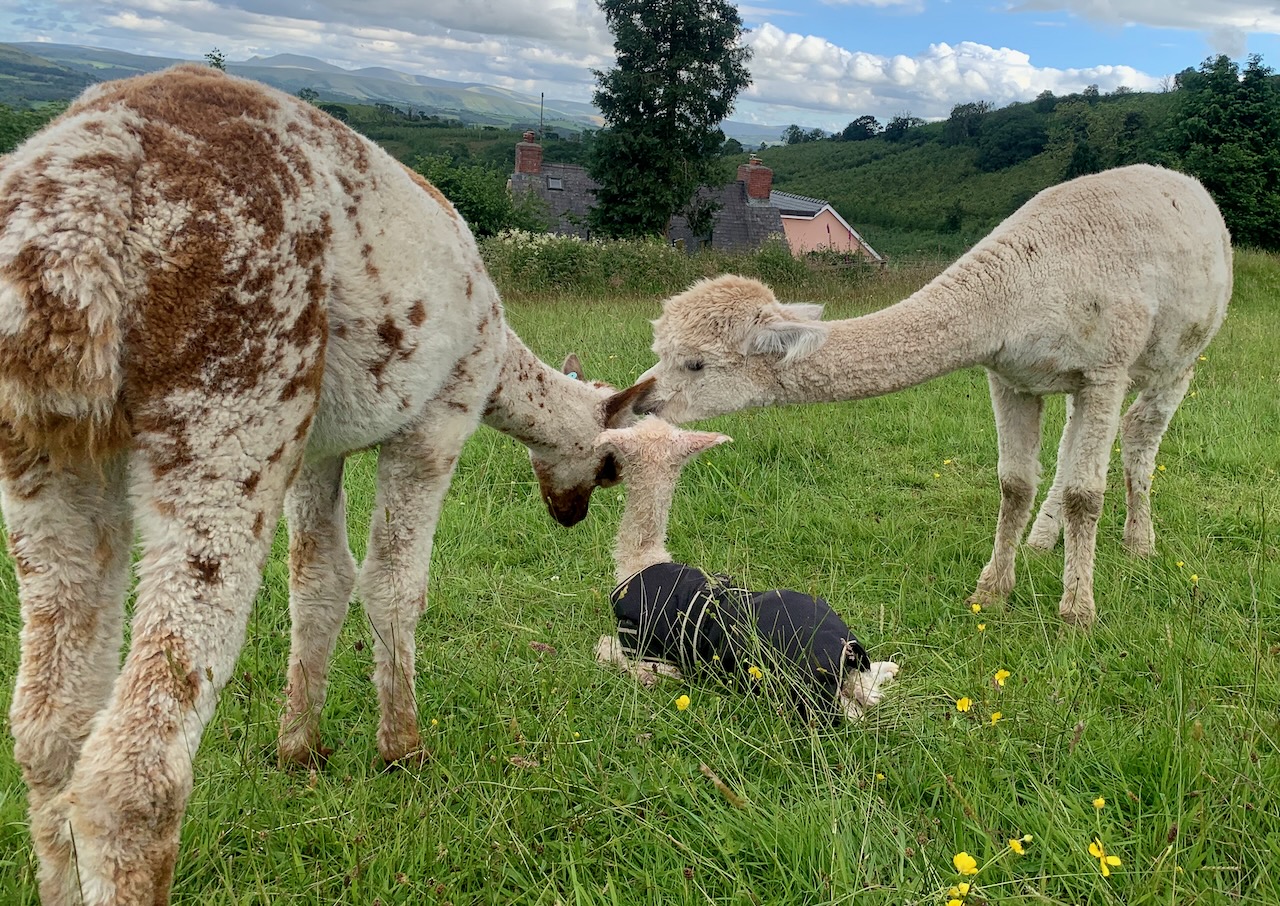
Castration
Males (both entire and castrated) and females should always be kept separately, except if you are doing controlled paddock mating. If a male is not going to be used for breeding they would generally be castrated after about 15 months of age. As with all animals, entire males are very likely to fight and potentially hurt each other. Castration generally limits aggressive and territorial behaviour.
